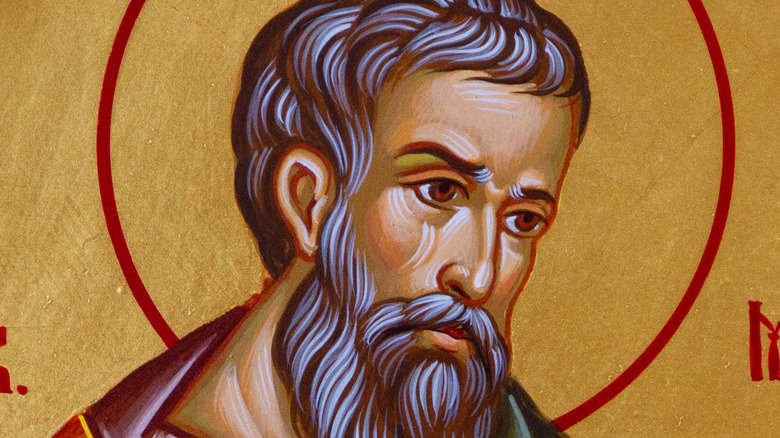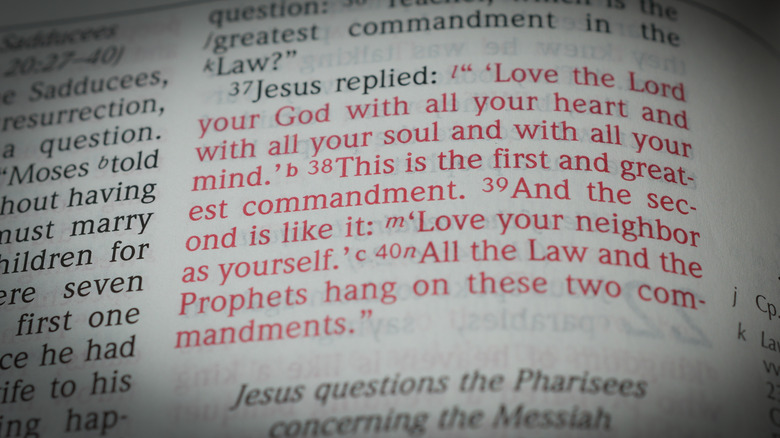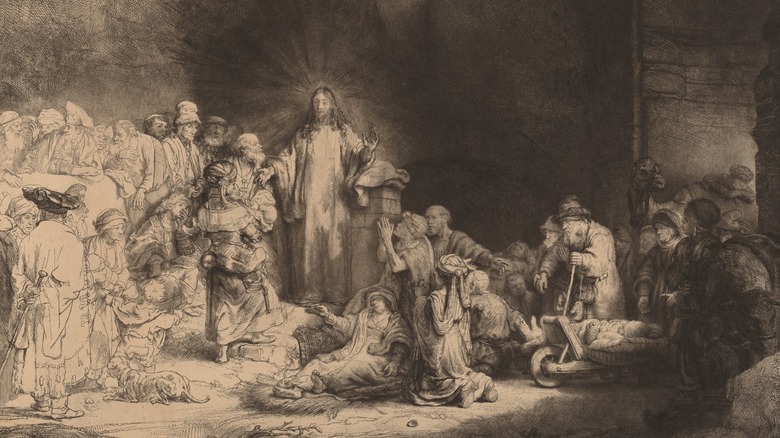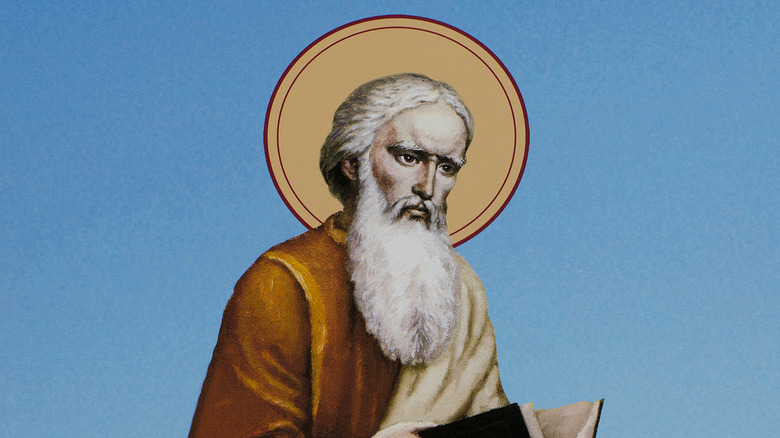The Untold Truth Of The Gospel Of Matthew
For 2,000 years, Christendom has referred to four ancient narratives about the life of its prophet, Jesus Christ, as "the Gospels." Four texts — Matthew, Mark, Luke, and John, named for the authors traditionally ascribed to them — provide descriptions and accounts of the events of Jesus' life and ministry, each text with its similarities and differences to other texts. Collectively, these four books provide as complete a picture as we're going to get of what happened before, during, and after Christ's resurrection.
The first of these four sacred texts bears the name of Matthew, traditionally that of the man who wrote it. According to Learn Religions, the author was a close companion of Jesus Christ and an eyewitness to the events he wrote about, making his text possibly an accurate and reliable account of Jesus' life. Further, the personal history of the man whose name is attached to the gospel brings another layer of meaning to the text, as does its placement at the beginning not only of the four gospels, but of the New Testament itself.
Matthew comes first for a reason
Back in the second century, when the earliest Christians were assembling the texts that would ultimately come to be known as the Bible, the Gospel of Matthew was placed first in the collection of books that would come to be known as the New Testament. As Spark Notes explains, there were two reasons for this. The first is that it was believed at the time that Matthew was the earliest of the gospels (although it turns out that Mark's is older). The second reason is that Matthew relies quite a bit on Judaism and Judaic tradition in its narrative, meaning that, in its place at the beginning, it provides a "bridge," of sorts, between the Old Testament and the New.
Indeed, as Learn Religions notes, Matthew is the most Jewish of the gospels. The text contains the most references to the Old Testament than any of its companions, and the writer is careful to juxtapose sayings from Jewish tradition in the context of Jesus' life and ministry. Further, the author was quick to point out what he believed were the failings of the Jewish people to embrace Jesus, possibly playing a part in setting the stage for the later spreading of Christianity not to the Jews, but to the Gentiles.
Matthew was an enemy of the Jewish people
As Learn Religions notes, the man identified as Matthew in the New Testament, and who traditionally wrote the gospel bearing that name, was a tax collector for the Romans before he was called by Jesus. Specifically, the text introduces him as having been working in his collection booth, collecting duties from farmers and merchants. To say that the tax collectors were hated is an understatement. For one thing, many, like Matthew himself, were Jews who were doing the dirty work of the Romans, and as such, were seen as traitors. Further, it wasn't uncommon for the collectors to extract a little more than they were owed and keep it for themselves; since they were working for Rome, no one dared complain.
Jesus' calling of a tax collector is at once a metaphor for Christ's forgiveness — which is to say, his calling is for anyone and everyone, regardless of their sin — and of the transformative nature of living the Christian life, the Learn Religions author notes. Further, Matthew's job made him qualified to be a gospel writer: his literacy, his attention to detail, his ability to observe people.
Matthew leans heavily on Jesus' sermons
Although the Bible from which modern-day Christians read is divided up into chapters and verses, those were not original to the text and, indeed, those divisions may actually contradict the more natural divisions within the text. Such is the case with Matthew which, according to Spark Notes, is divided into seven sections, irrespective of their comparatively modern chapter-and-verse divisions. Specifically, an introduction sets the stage for Jesus' arrival, and a conclusion ties up the narrative with Jesus' Last Supper, crucifixion, and resurrection. The five other parts are each arranged around one of Jesus' sermons, according to the United States Conference of Catholic Bishops. Indeed, each of these five sections contains a discourse, followed by the phrase, "When Jesus finished these words" or something similar. The five sermons are: the Sermon on the Mount, the Missionary Discourse, the Parable Discourse, the "Church Order" Discourse, and the Eschatological Discourse, as Bible scholars call them.
Writing in Circe Institute, Brian Phillips describes the five discourses, as recorded in Matthew's gospel, as "a retelling and fulfilling of the entire Old Testament."
The authorship of the gospel of Matthew is disputed
When it comes to the authorship of books of the Bible, for centuries two conflicting schools of thought have competed against each other. The traditional view holds that every book of the Bible was written by one man, oftentimes the name of the man whose name has been attached to it (Isaiah wrote "Isaiah," for example, or Luke wrote "Luke"). Modern scholarship of the last few centuries has held that these books are the result of copying, editing, and compilation by large numbers of people, and that the names traditionally ascribed to them are not always reliable.
In the case of Matthew, it's highly unlikely that it was written entirely by one man. Indeed, as the United States Conference of Catholic Bishops notes, much of the text of Matthew is copied word-for-word from Mark (which was written earlier), suggesting that, at the very least, both gospels shared a similar source. Similarly, according to Spark Notes, the author was likely an anonymous member of a Jewish community drawing not only from Mark (or his source), but from oral tradition.
It's unclear what became of Matthew
The apostle of Jesus identified as Matthew is something of a key figure in the New Testament. His career as a tax collector and his calling to Jesus' ministry served as a living metaphor for forgiveness and transformation. And of course, he had a gospel named after him, although whether he wrote it (or indeed any of it) is a matter of dispute. However, outside the New Testament, his name is virtually absent from recorded history, and indeed, what became of him after Jesus' life is completely unknown.
As Overview Bible notes, as is the case with nearly all of Jesus' disciples, the absence of historical fact hasn't gotten in the way of tradition. Early records — which are sporadic, incomplete, and unreliable — hold that he may have ministered in Ethiopia (which is not the same Ethiopia that appears on a map of Africa, but rather, a region around the Caspian Sea), and that he was martyred. However, it's unclear where, why, or how he was martyred, with various traditions claiming he was stabbed or beheaded, or indeed, he may have simply lived to an old age and died of natural causes.





